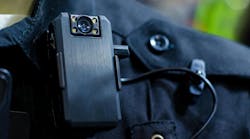Nov. 02--MILFORD -- It took the defense in the Jason Anderson manslaughter trial 21/2 hours and three witnesses to present one message: David Servin was driving drunk early in the morning of June 13, 2009.
Anderson, 37, is the fired city police officer charged in the deaths of driver Servin and passenger Ashlie Krakowski, both 19 and Orange residents.
Anderson did not testify.
He was at the wheel of a 2008 Crown Victoria police cruiser when he hit the 2008 Mazda driven by Servin at about 2:15 a.m.
Anderson was driving 94 mph in a 40 mph zone on the Boston Post Road in Orange just before the crash at Dogwood Road and was not responding to an emergency.
The defense and state's attorney Friday will take one hour each for closing arguments. Superior Court Judge Denise D. Markle then will give instructions to the jury, which will begin deliberating Friday and continue Monday.
The prosecution rested its case Oct. 26.
First defense witness up Thursday, Dr. James O'Brien, a toxicologist, pharmacologist and medical doctor, described the effects of 0.14 blood alcohol concentration on a 19-year-old man weighing 137 pounds.
"They're really a danger to themselves and to others. People like that should not be driving," he said.
Legal blood-alcohol content in the state for anyone younger than 21 is 0.02; the limit for adults is 0.08.
O'Brien, formerly director of the state Poison Control Center, said with 0.14 , there is a decrease in judgment, caution and ability to concentrate, and an increase in risk-taking.
"You'd be pretty high at 0.14," he said, unconscious of the surroundings. A person's ability to recognize danger would be decreased, he said.
There is also impairment of visual and motor skills and reaction time, and a marked difference in the ability to do several things at once.
"Driving needs multiple tasks," he said.
O'Brien, in response to a question from State's Attorney Kevin D. Lawlor, said he did not review the crash video recorded that night on another officer's dashboard camera.
The video has been replayed in the years since the accident and was shown several times in court.
Lawlor also questioned whether an impaired driver would be able to slow down, put on a blinker, stay in an appropriate lane, all of which witnesses have testified Servin accomplished that night.
Defense attorney Hugh F. Keefe of New Haven then asked O'Brien: "If someone is 0.14 , is he more likely to disregard a red light?
"More likely to turn in front of two approaching vehicles?
"More likely to make a bad decision to get into a motor vehicle to begin with?"
To which O'Brien responded: "Sure. He'd be more likely to do the wrong thing."
Keefe then called accident reconstructionist Peter G. Plante of Mansfield, a former 20-year state trooper who served on the Statewide Narcotics Task Force.
Plante said he examined the accident site, records and traffic signal mechanism, along with the video, which he watched "over and over."
In 70 minutes of testimony, Plante said the cruiser was about 180 feet from impact when Servin made the left turn through the blinking red light at Dogwood.
Judging by his reaction time of braking, Anderson was "extremely alert, not fatigued and not distracted in any way," Plante said.
Did Servin come to a legal stop, Keefe asked Plante.
"He did not."
Plante explained that Servin went through the light and was hit going 34.7 mph.
"If Mr. Servin had come to a stop, he could not have achieved that impact speed," Plante said.
"I would say it (failure to stop) was the cause of this collision," Plante said.
A second accident reconstructionist, Hamden engineer O. John Zamparo, testified the Mazda did not stop at the blinking light.
Zamparo brought up an observation made by prosecution eyewitness Shamily LeCleres, who had been outside a nearby billiards hall that night.
LeCleres had made statements about the second officer's emergency lights being on just before the crash.
Zamparo said her observation was "important to note." He said it "served as a warning to Mr. Servin that there was at least one police vehicle" on the road.
Keefe asked if Servin's blood-alcohol content played a role in the accident.
"It's well-known that a person that's impaired ... doesn't have the same perception. It causes a long reaction. ... I think that's what happened," Zamparo said.
Under questioning by Lawlor, Zamparo said the dashboard video did not show the second officer's emergency lights on.
Call Phyllis Swebilius at 203-789-5681. Sign up for the New Haven Register/Milford Matters email newsletter for all the latest news on Milford.
Copyright 2012 - New Haven Register, Conn.


